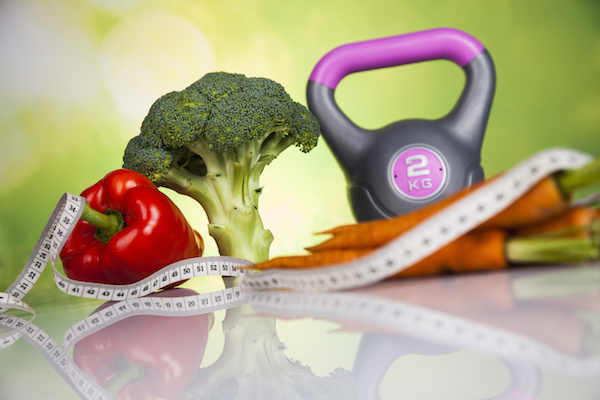
WEDNESDAY, Aug. 25 (HealthDay News) — If you’re like millions of Americans, the recent news of a massive egg recall due to salmonella contamination has probably made you refrain from ordering “sunny side up” the past couple of weeks.
But now some time has passed, and you’re starting to crave an omelette. So you’re wondering: Is it safe to eat the eggs languishing in your fridge or are you inviting a bout of vomiting and stomach cramps?
The first thing to do is to check the carton for the “Sell By” date and the two numbers below it, federal health officials say, to see if your eggs are involved in the recall. One number is the plant number, and the other is the packaged date, or Julian date, showing what day of the year the eggs were packaged. For example, Jan. 1 is 001 and Dec. 31 is 365. The U.S. Food and Drug Administration has a list of what numbered designations are included in the recall.
Wright County Farms and Hillandale Farms, the companies involved in the recall, have identified more than 16 brand names under which the eggs were sold, but that information is incomplete. Some eggs were sold individually rather than in cartons, so they could be repackaged under other brands. If you are unsure about the source of your eggs, throw them away, the FDA advised.
Recalled eggs should have already been removed from your grocery store’s shelves, but it can’t hurt to doublecheck the carton on any new eggs you buy.
The agency and food safety experts also offered this advice on how to know if your eggs are OK to eat and how to protect yourself from salmonella:
First, what is Salmonella enteritidis?
Salmonella enteritidis is a bacterium that can live on either the outside or inside of eggs and cause foodborne illness. Symptoms include cramps, diarrhea, nausea, vomiting, chills, fever and possibly headache within 12 to 72 hours after eating.
While salmonella can make you pretty miserable, it’s rarely fatal in healthy people and symptoms last only a few days, said Benjamin Chapman, an assistant professor of food safety at North Carolina State University.
Still, salmonella isn’t something to take lightly, Chapman stressed. It can lead to long-term complications and is especially serious in pregnant women, very young children, the elderly and those with weakened immune systems, he noted.
What are my chances of getting it by eating eggs?
Salmonella is a fairly common bacteria, especially in agricultural and animal production areas, and one of the most common causes of foodborne illnesses, Chapman said.
Even before the recall, the U.S. Department of Agriculture’s 2005 risk assessment estimated about one in 20,000 eggs contains salmonella, Chapman said. And it’s not just eggs. In recent years, salmonella outbreaks have been associated with peanut butter, fresh fruits and vegetables, including tomatoes and melons, as well as poultry and pork, Chapman said.
People can also be asymptomatic carriers of salmonella, he added.
How many people have gotten sick so far?
The latest estimates from the U.S. Centers for Disease Control and Prevention are about 1,300 cases. No deaths have been reported. But the actual numbers could be thousands more, Chapman said. Most people who get salmonella don’t go to the doctor. Even when they do, doctors often don’t request stool samples — and patients often would rather not give one — that are needed to test for the bacteria.
How do eggs become contaminated?
The FDA is still trying to determine the cause of the contamination in the eggs involved in the recall. But likely sources may include rodents or contaminated feed. When hens ingest the salmonella-contaminated feed, the bacteria can grow in the hens ovaries, which contaminates eggs as they form, Chapman said.
Can you tell which eggs are contaminated by looking at them?
Chickens infected by salmonella don’t show any outwards signs of it, nor do their eggs, Chapman said. Eggs contaminated with salmonella look, smell and taste the same as other eggs.
How can I protect myself from salmonella?
During food preparation, take precautions by thoroughly washing your hands, countertops and utensils after handling raw eggs. “When you crack an egg, a little egg juice will usually get on your hands or countertop. You want to make sure you’ve washed that before you accidentally lay your toast on it,” Chapman said.
Also, avoid eating raw or lightly cooked eggs. Heating eggs to at least 155 degrees — when the yolks gets firm and there are no visible signs of liquid remaining — will kill most bacteria and dramatically reduce your chances of becoming ill, Chapman said.
Another option is buying pasteurized eggs in the shell, which are carried in many grocery stores. Pasteurized eggs cost a bit more, but pasteurization kills most salmonella.
When it comes to storing eggs, be sure to refrigerate them. Salmonella grows faster in warmed temperatures, so keeping eggs on the countertop isn’t a good idea.
Are there any foods to watch out for?
Raw eggs may be used in Caesar salad dressing, homemade ice cream, cookie dough and mayonnaise. Also, avoid eggs prepared “sunny-side up” or “over easy.”
What about baking or eating baked goods?
Since the high temperatures required for baking kill salmonella, baking a cake should be no problem, Chapman said. The same goes for eating packaged foods that contain eggs, such as cake mixes and store-bought cookies. Those would likely be made with pasteurized eggs anyway, according to FDA officials.
Is it enough to simply cook all eggs at a high temperature? Do I still need to check that they might be under recall?
Even if you are careful during food preparation and cook eggs thoroughly, the recalled eggs still have a higher likelihood of actually containing salmonella, Chapman said. Why take the chance? Return them to the store where you bought them for a refund, he said.
More information
For more on salmonella, go to the U.S. National Library of Medicine.

